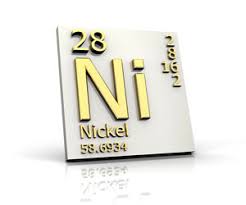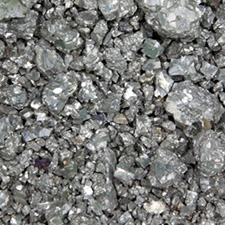What Nickel Is Valuable
Nickel, whose elemental symbol is Ni, has an atomic number of 28 in the periodic table and a relative atomic mass of 58.69. It is a metal from Group VIII. Its density is 8.9 g/cm³, the melting point is 1455 °C and the boiling point is 2730 °C. Nickel is a silvery-white metal that oxidises in air, forming a black oxide layer on its surface. Consequently, nickel is frequently observed as black. It is hard, ductile, exhibits magnetic properties and corrosion resistance, and can be highly polished. Nickel is plentiful in the Earth’s crust. In nature, it occurs as nickel silicate or as compounds with sulphur, arsenic and other nickel compounds. It is commonly used in the manufacture of stainless steel, alloyed steel and other steels, in galvanising, in high-nickel alloys and batteries, and in the aerospace, radar and other military manufacturing industries, as well as in the civil engineering and galvanising industries.

Brief Introduction to Nickel Smelting
Nickel ore consists of copper sulphide ore and oxide ore; their processing and smelting differ. The copper-nickel sulphide ore is selected from stone and then melted. The smelting and enrichment methods for nickel oxide ore can be divided into two main categories: pyrometallurgical and hydrometallurgical processes.
Nickel Processing
Electrolytic process: The enriched sulphide ore is roasted to convert it into oxide, reduced to coarse nickel using carbon, and subsequently pure nickel is obtained by electrolysis.
Carbonylation process: Nickel sulphide ore reacts with carbon monoxide to form tetracarbonyl nickel. The compound decomposes on heating, thereby yielding pure nickel metal.
Hydrogen reduction process: The reduction of nickel oxide by hydrogen produces metallic nickel.

Types of Nickel Products
Basic Nickel Products
- Nickel strip, nickel plate, pearl nickel foil plate, nickel scrap, nickel electrode, nickel, nickel sponge products, nickel scrap angle mesh, electrolytic nickel, nickel galvanising, nickel foam, pure nickel wire, nickel galvanising plates, mobile phone card, nickel galvanising card scrap edge material, conductive nickel foil, Ni Cd, nickel galvanising mould plate, nickel slag, nickel pearl mesh printing.
Products from Nickel Alloys
Nickel–iron alloy, nickel–molybdenum alloy, nickel–cobalt alloy, nickel–aluminium alloy, high-nickel alloy, nickel–zinc alloy, nickel–copper alloy, nickel powder.

Classification of Nickel Products by Purity Grades:
Grade one: The London Metal Exchange (LME) trades nickel with a purity exceeding 99.8%, for example electrolytic nickel, nickel blocks and nickel pellets. Its applications include specialised steel, electronic components and aerospace materials, such as alloys, catalysts, galvanic coatings and battery materials.
Grade two: This category comprises nickel–iron alloy (with nickel content ranging from 16% to 40%), nickel oxide (with nickel content from 75% to 98%) and general nickel (with a nickel content of around 98%), among others. Nearly all of these are used for specialised steel. Additionally, there are chemical products such as NiSO4·Ni(OH)2, NiCl2·NiCO3 and others. Most products of these grades are made from nickel lumps; consequently, the consumption quantity should be converted based on the actual nickel content.

 Bars
Bars
 Beads & Spheres
Beads & Spheres
 Bolts & Nuts
Bolts & Nuts
 Crucibles
Crucibles
 Discs
Discs
 Fibers & Fabrics
Fibers & Fabrics
 Films
Films
 Flake
Flake
 Foams
Foams
 Foil
Foil
 Granules
Granules
 Honeycombs
Honeycombs
 Ink
Ink
 Laminate
Laminate
 Lumps
Lumps
 Meshes
Meshes
 Metallised Film
Metallised Film
 Plate
Plate
 Powders
Powders
 Rod
Rod
 Sheets
Sheets
 Single Crystals
Single Crystals
 Sputtering Target
Sputtering Target
 Tubes
Tubes
 Washer
Washer
 Wires
Wires
 Converters & Calculators
Converters & Calculators
 Write for Us
Write for Us
 Chin Trento
Chin Trento



